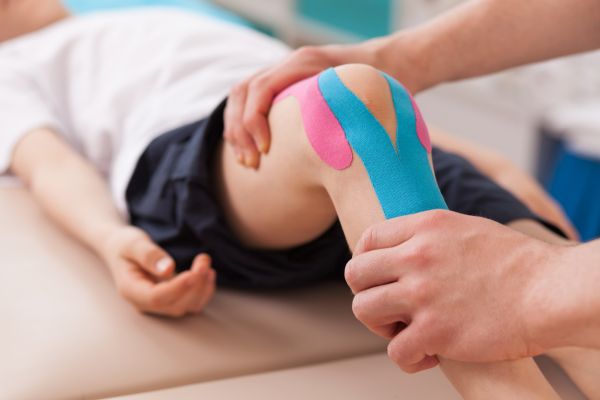
Knee injuries are one of the most common musculoskeletal issues, including strains, sprains, ligament tears and meniscus damage. Regardless of injury severity, physical therapy for the knee can be essential for restoring function, reducing pain and preventing future damage. Learn more about knee injury rehabilitation.
The Role of Physical Therapy
Knee injuries can occur due to various factors, such as trauma, overuse or underlying conditions like arthritis. Physical therapy is essential in the recovery process, providing targeted treatments that address the specific needs of the injured knee.
The primary goals of physical therapy are to restore strength, flexibility and range of motion, while reducing pain and preventing re-injury.
Knee Strengthening Exercises
Joint strengthening is a cornerstone of knee rehabilitation. Exercises focus on rebuilding the muscles around the knee, particularly the quadriceps, hamstrings and calves, to help the knee regain support and stability.
- Quadriceps Strengthening: Exercises like straight leg raises and quad sets restore muscle mass and strength to help the quadriceps support the knees.
- Hamstring Curls: Performed lying down or standing with resistance bands, hamstring curls help strengthen these muscles and stabilize the knee joint.
- Calf Raises: This simple yet effective exercise also contributes to knee stability. Calf raises help with knee extension and supporting the body during movement.
Range of Motion and Flexibility Exercises
After a knee injury, limited movement can lead to stiffness and prolonged recovery. It’s essential to include flexibility exercises early in the rehabilitation process to gently stretch the muscles and tendons around the knee and improve mobility.
- Heel Slides: This basic exercise involves sliding the heel towards the buttocks while lying on your back to gradually stretch the knee and improve its range of motion.
- Hamstring and Calf Stretches: Regular stretching prevents muscle tightness, improves knee flexibility and helps maintain balance in the leg muscles, reducing strain on the knee.
- Wall Slides: To improve range of motion and regain functional mobility in the knee, wall slides involve sliding down a wall into a partial squat position.
Balance and Proprioception Training
Balance and proprioception, the body’s ability to sense movement and position, are often impaired following a knee injury. Improving these skills is crucial for preventing falls and ensuring safe movement.
Physical therapy treatment includes exercises that challenge balance and enhance proprioception, which are key for a successful recovery.
- Single-Leg Stance: Standing on one leg while maintaining balance helps improve proprioception and strengthens the stabilizing muscles around the knee.
- Balance Boards: Balancing on a board requires the knee muscles to make constant adjustments, which helps improve stability and coordination.
- Lunges: To build strength and challenge your balance, lunges are effective for more dynamic movements as recovery knee rehabilitation progresses.
Manual Therapy Techniques
Physical therapists use manual therapy, a hands-on approach to reduce pain, improve mobility and promote healing. Techniques can be highly effective in treating knee injuries.
- Joint Mobilization: Involves gentle movement of the knee joint to improve mobility and reduce stiffness.
- Soft Tissue Massage: Reduces tension and promotes blood flow by targeting the muscles, tendons and ligaments around the knee.
- Patellar Mobilization: Ensures a misaligned kneecap tracks properly, reducing pain and improving function.
Physical therapy is an essential component of knee injury rehabilitation, offering a comprehensive approach to recovery. Whether you’ve suffered a minor strain or more serious ligament injury, work with our physical therapists to support a full recovery!

